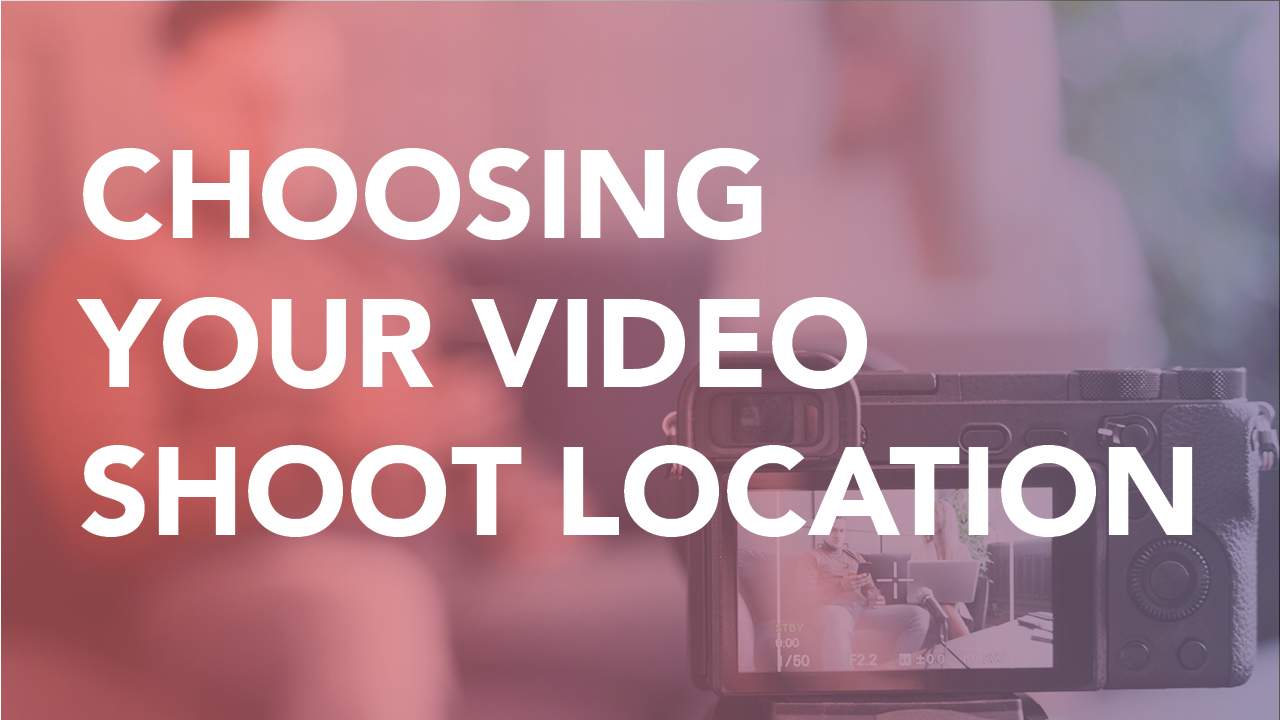Choosing your Video Shoot Location
Recce, recce, recce.
Try and find as aesthetically pleasing a location as possible
When planning your shoot, think about the shoot location. Scout locations across your work area. Don’t be afraid to take photos and do a mock interview. Plain white walls can look bland.
Your video is a reflection of your business, so an interesting background can make all the difference to the finished product.
Scout the location at the same time of day you'll be filming
The time of day that you'll be shooting is important. Think about daylight and the effect it will have on your subject matter.
Take into account, background noise and other potential interruptions.
Have an idea of how your location will look at shoot time so it’s not a surprise when your shoot gets underway.
Don’t underestimate how much recording equipment and lighting will be used on the day. This will impact on the size of space you’d like to use.
Natural daylight is always good, but we can change the light if moody and dark is your vibe
The lighting for you video will set the tone for the overall piece. If you like a bright fresh and look, search for rooms with windows that will let the light in. If all else fails, we have lighting that can help get the tone you’re looking for. Feel free to send pictures of your shoot location to the videographer prior to the shoot.
Watch out for hecklers and background noise as it will affect your audio quality
Look for a location where you will have maximum control over the audio. Typical things to look out for are people talking, ongoing building works and electrical appliances such as fridges, air conditioning and florescent lights. Also check out the area outside your shoot location. Are there wooden floors where people will be walking? In an outdoor environment, you have less control over these factors so it’s best to select a secluded location to shoot in.
Bigger isn't always better. Make sure there's enough space for the video crew to work in
It’s important that your shoot location allows adequate space for your camera operators to work. You may be working with light stands, tripods, boom pools and wiring, but to name a few. Ensure there is enough space for wires to lie flush on the ground this will minimise tripping.
Stock photo of an extension lead power supply
POWER: Check for power supplies
It’s always a good idea to make sure the shoot location has plug sockets. Light stands may require a power source.
Make sure you have permission
Paperwork is always important.
You must have permission from your chosen location and from your participants.
This means your shoot is already off to good start.
If unsure, ask your videographer about release forms for subjects and locations.
Try and find as aesthetically pleasing a location as possible
When planning your shoot, think about the shoot location. Scout locations across your work area. Don’t be afraid to take photos and do a mock interview. Plain white walls can look bland.
Your video is a reflection of your business, so an interesting background can make all the difference to the finished product.
Scout the location at the same time of day you'll be filming
The time of day that you'll be shooting is important. Think about daylight and the effect it will have on your subject matter.
Take into account, background noise and other potential interruptions.
Have an idea of how your location will look at shoot time so it’s not a surprise when your shoot gets underway.
Don’t underestimate how much recording equipment and lighting will be used on the day. This will impact on the size of space you’d like to use.
Natural daylight is always good, but we can change the light if moody and dark is your vibe
The lighting for you video will set the tone for the overall piece. If you like a bright fresh and look, search for rooms with windows that will let the light in. If all else fails, we have lighting that can help get the tone you’re looking for. Feel free to send pictures of your shoot location to the videographer prior to the shoot.
Watch out for hecklers and background noise as it will affect your audio quality
Look for a location where you will have maximum control over the audio. Typical things to look out for are people talking, ongoing building works and electrical appliances such as fridges, air conditioning and florescent lights. Also check out the area outside your shoot location. Are there wooden floors where people will be walking? In an outdoor environment, you have less control over these factors so it’s best to select a secluded location to shoot in.
Bigger isn't always better. Make sure there's enough space for the video crew to work in
It’s important that your shoot location allows adequate space for your camera operators to work. You may be working with light stands, tripods, boom pools and wiring, but to name a few. Ensure there is enough space for wires to lie flush on the ground this will minimise tripping.
Stock photo of an extension lead power supply
POWER: Check for power supplies
It’s always a good idea to make sure the shoot location has plug sockets. Light stands may require a power source.
Make sure you have permission
Paperwork is always important.
You must have permission from your chosen location and from your participants.
This means your shoot is already off to good start.
If unsure, ask your videographer about release forms for subjects and locations.

